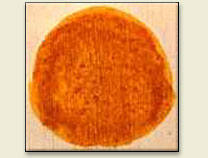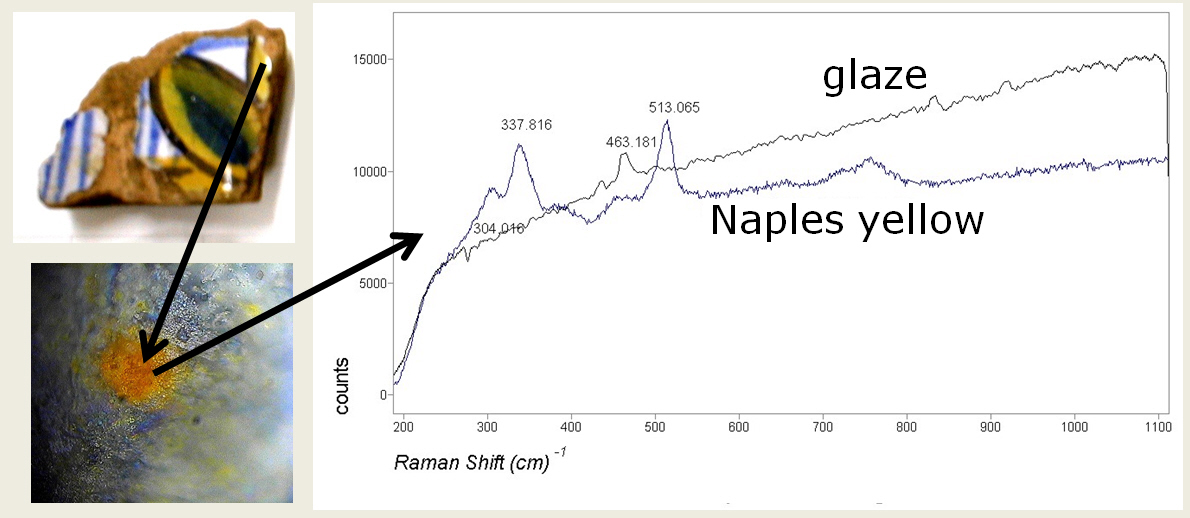
Brief description of Naples yellow:
One of the oldest synthetic pigments with very good hiding power, tinting strength, drying properties and chemical stability. It's a lead antimonate used as a colour tint in yellow ceramic glazes already in Babylon and Assyria and was also found in Egyptian glass of the XIX Dynasty. It was reputably a pigment in the palette of the Old Masters but generally its history is unsure. Up until the watercolour period its importance is undocumented. It has been essential to the landscape tradition because it has the quality of appearing to receed into the picture's distant plain sun like other yellows which sit in front of the plain.
Names for Naples yellow:
| Alternative names: | Lead antimonate yellow | ||||||
| Non-English names: |
|
||||||
| Origin: | artificial | ||||||
| Chemical name: | Lead(II)-antimonate |
Example of use by artists:
Not only paintings

The yellow decorations of some sicilian renaissance glazed pottery were examined through Raman spectroscopy. The yellow pigment was identified as lead antimonate, the well-known Naples Yellow. A spectra from the yellow decoration shows the naples yellow peaks. Indeed, enamels may be coloured by the addition over te glaze of high temperature resistant pigments which will be incorporated into the glaze once the glaze melt. The basic oxides generally used are those of iron, cobalt, copper, lead, antimony (Naples yellow) and titanium.
(intro) - Cadmium yellow/red - Chrome yellow - Cobalt yellow - Indian yellow - Lead-tin yellow - Lemon yellow - Naples yellow - Orpiment - Yellow ochre

